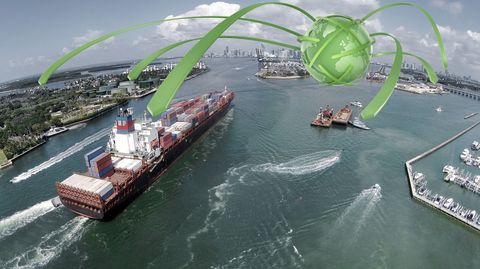Since it was first agreed in December 2013, businesses worldwide have been awaiting the implementation of the World Trade Organization's (WTO's) Trade Facilitation Agreement (TFA), a new deal with a potentially wide-ranging impact on international trade.
Designed to expedite the movement, release and clearance of goods between nations, the deal also sets out measures for effective cooperation between customs and other authorities on trade facilitation and customs compliance issues, while encompassing provisions for technical assistance and capacity building in this area.
The agreement is yet to come into force - it will do so once two-thirds of members have completed their domestic ratification process - but in the meantime, the WTO has published a new study assessing the potential benefits the agreement could bring, particularly to the economies of developing nations.
The key fiscal benefits
Designed to expand world trade, reduce costs and help developing countries to integrate better into the global economy, the impact of the TFA is widely predicted to be positive and broad-ranging.
According to the WTO's 2015 World Trade Report, it is expected that global merchandise exports will increase by between $750 billion and $1 trillion (£496.23 billion to £661.63 billion) per annum as a direct result of the TFA, with fuller, faster implementation of the agreement increasing the likelihood of this figure reaching the higher end of the range.
Developed economies' exports are estimated to increase by between $310 billion and $580 billion per annum, while in developing nations this range will be between $170 billion and $730 billion, with the WTO predicting that emerging markets will capture more than half of the available gains.
The overall boost to world export growth stemming from the TFA is expected to reach up to 2.7 per cent on a yearly basis, while global GDP growth per annum will increase by 0.5 per cent.
Wider implications
However, the report noted that the benefits of the deal will hopefully go deeper than the headline figures. One of the main ways this will manifest is in helping developing countries to diversify their exports, allowing these nations to increase the number of new products they sell abroad by as much as 20 per cent, rising to 35 per cent in the least developed nations.
Since the TFA is expected to reduce delays and variability in delivery time, it should make it easier for these nations to participate in global value chains, while full implementation of the deal could reduce trade costs of members by an average of 14.5 per cent.
Meanwhile, the reduction in border control delays that currently disproportionately affect smaller companies will help level the playing field for SMEs, with trade facilitation efforts also likely to bolster inward flows of foreign direct investment in emerging markets.
Finally, it was predicted that the TFA could help to increase customs duties and other taxes collected at the border, bolstering revenues for less prosperous nations, while the reduction of bureaucratic burdens will ensure greater transparency and disincentivise fraudulent practices.
It was noted, however, that realising the full potential benefits outlined by this report will require political commitment and engagement for the duration of a potentially lengthy reform process.
Roberto Azevedo, director-general of the WTO, said: "The world is more connected than ever before. More and more developing countries are seeking to join global trade networks, yet all too often outdated and uncoordinated customs processes slow down the movement of goods and raise costs to prohibitive levels.
"By standardising, streamlining and speeding up customs processes around the world, the WTO's Trade Facilitation Agreement will help to solve this problem. It is global trade's equivalent of the shift from dial-up internet access to broadband - and it will have a similar impact."






